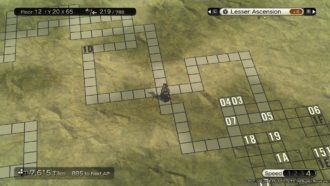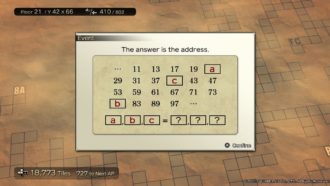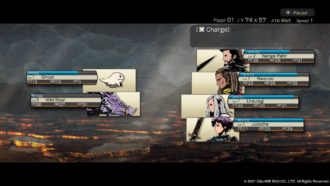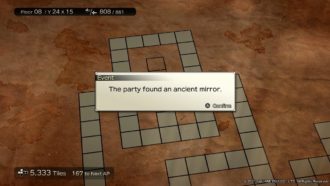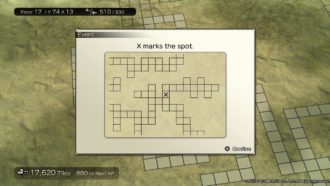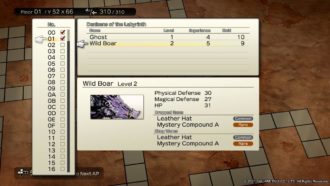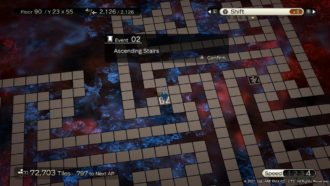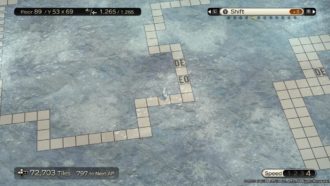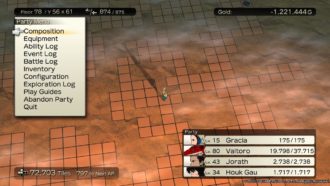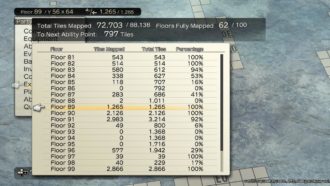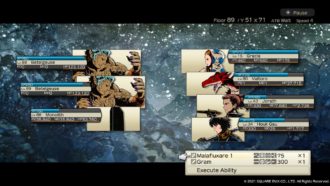Platforms:
PS4, PC, Nintendo Switch, PS5
Released:
October 14, 2021
Publisher:
Square Enix
Developer:
Square Enix
Every so often, when Square Enix isn’t busy creating another entry in the beloved Final Fantasy or Dragon Quest series, the giant Japanese games company likes to take risks. Sometimes it works out horribly and leaves you wondering “Why?” Other times, they re-release sleeper hits and it works out… okay. Most rare and special is when they drop a title so unique, begging for players’ attention. Dungeon Encounters is that very game.
A call to arms
If you’re at all a Square Enix nerd, the following information on the game will be absolutely enticing. Dungeon Encounters is a dungeon crawler with rogue-lite elements, directed by the clever mind of Final Fantasy veterans such as Hiroyuki Ito, an individual responsible for the monoliths such as Final Fantasy IX, XII: Zodiac Age and Tactics. At his side is Hiroaki Kato, another key figure in Zodiac Age and the legendary music composer Nobuo Uematsu. If you’re aware of these figures at all, you’d be remiss if you didn’t consider that the dream team.
What quickly becomes apparent here is that this is an adventure that is more game than story. Dungeon Encounters sports a narrative in the sense very early Final Fantasy games would offer. There’s one there, it’s just second place to the feeling of adventure on offer. The general setup is that a mysterious dungeon has appeared on the outskirts of a quaint town. It’s up to you to gather an ensemble of heroes. Plunge through the 99 labyrinthian levels, charting each tile as you go, defeating the fantastical foes that await inside.
There’s a large number of party members that are recruitable for your primary group of four. Starting off your ventures at an academy, some of the characters you can choose from the get-go follow designs that are typical fantasy archetypes. Brave sword fighters, mages and the likes. Later, your tougher travellers are more wild offerings such as a robot, a dog with a sword and a big, chubby feline by the name Sir Cat. Save for a character profile, you won’t get to know these characters too intimately. No voicework or dialogue is on offer, but frankly, it’s not all that missed. The world and its cast can be what you make of it, with encapsulating music and sound design, along with varying biomes (more on all that later), is more than enough to aid here.
Dungeon Encounters is the deepest Square Enix RPG we’ve seen for some time
As a dungeon crawling adventure, Dungeon Encounters could very well deceive players with its minimalistic look. Make no mistake, this is a rogue-lite adventure with a true bang for buck value and wells of depth. I lost hours upon hours in-game, celebrating the biggest of wins in a successful floor clearing, and grieving the feared game over screen. While this loop is initially daunting, jumbling and learning plenty of mechanics, when the game clicks for you, it’ll really click.
“…Make no mistake, this is a rogue-lite adventure with a true bang for buck value and wells of depth.”
Take the exploration for example. Dungeon Encounters takes the risk vs reward of exploring every inch of a level, with the risk of dying further than any genre entry in recent memory. You see, here you have to explore every single tile on offer. Laid about before you on any given level is a labyrinth of tiles. Charting each is important not only to find those crucial spots that provide a party heal but if every tile on a level is explored, you’re rewarded with Ability Points. These are crucial in having the required quota to be able to perform any of the large plethoras of abilities you’ll receive throughout the 99-floor plunge, many purposed to aid you (though sometimes with a catch).
These abilities can be summed up into exploration and battle categories. Battle abilities range from typical active forms like restoration and resurrection to passive ones such as Softskin, which prevents petrification effects from being cast upon your team. In any combat mechanic, these would be efficient. Though these abilities, along with others, become more thoughtful in the returning ATB (Active Time Battle) style of fighting. In this turn-based setting, while you’re awaiting your turn as that gauge fills, you’re working out how to best whittle down the enemies’ magic or physical defence barrier. Maybe half of your party attacks while the other uses some abilities.
Let’s talk more on this combat though. Wow. Along with the more diverse range of abilities, other familiar elements will additionally need to be at the forefront of your mind. I found myself constantly cycling weapons and spells that deal higher damage just to keep up. As stated, both your party and your enemies will have magic and physical defence barriers, with one or the other (or potentially both) needing to be fully depleted before chipping away at HP begins. In a lot of instances, one of your foes’ barrier types will be lower than the other, so this is where you’ll want to hone your focus.
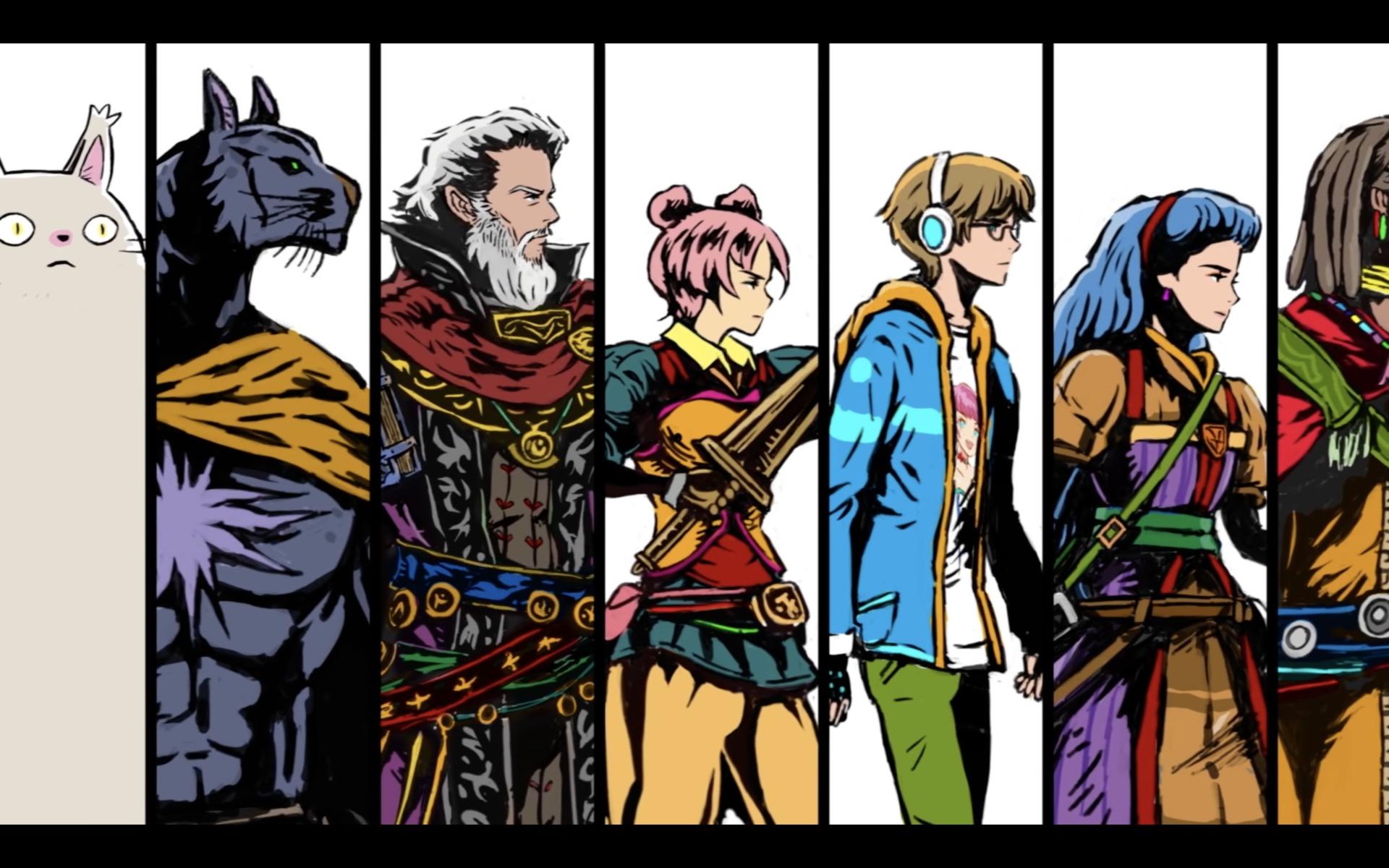
All these moving parts, whether that’s strategising the best gear or adapting your form of attack are so rewarding and welcome. What this ends up feeling like at the end of the day is the best use of the long-lasting ATB style of combat yet. The team really appear to have put a lot of thought into what does and doesn’t work for the system, creating the greatest iteration of a decades-old mechanic. The only complaint I have is nitpicky, and one that comes down to personal preference. While you can boost up the speed for exploration and battles, there’s no auto-battling option, which we have seen in some recent ports of Final Fantasy games. It could have been helpful for the quieter, low-key grind moments. However, given the depth of combat this time, requiring more focus than ever, the remission is forgivable.
Meanwhile, Exploration abilities are your saving grace. Descension and ascension skills let you move up or down a level, provided there’s a tile directly above or below the player. This, along with Fiend Shift (a skill that readjusts the tiles enemy encounters will occur on), are especially handy for when situations get hairy. This will occur a lot. While any level provides you with exits higher and lower, it’s only every 10 floors that you’ll receive a teleport that takes you back to floor 0, serving as the primary hub that you can swap out party members at the academy, heal HP and ability points or choose other teleporters. So, getting back to this point is tough and elements can work both in and out of your favour. Careful consideration is key if you don’t want it all to come crumbling down.
When (not if) you lose a party, seeing that Game Over screen, you thankfully won’t be out of options. Depending on your priorities, you can opt to lose the floor progress but retain the combat levels your party members gained. Or, you can continue from the last point you rested and saved. Different points of the game will benefit from both approaches, and this is where Dungeon Encounters shines in its rogue-lite form. Despite being hard, there’s always room to move forward. It will be a tough crawl of progress at times, but it doesn’t always need to be.
Exploration that’s rewarded and vibes that feel homely
As stated earlier, it’s key you chart every inch of Dungeon Encounters’ 99 floors. Players can find great reward in the many riddles and secrets that can come from searching every nook and cranny. Map riddles exist in the form of a preview screenshot, indicating specific tiles players will have to identify and interact with to receive gold or important gear. Math riddles meanwhile will have a calculation puzzle, often using algebra and at times complicated addition, working out coordinates of where you too will find similar rewards.
I will admit the latter became quite challenging at times, not having actively used that type of maths in my day to day life in some time. I liked this challenge even in the most brain wrinkling moments. Playing in the morning or evening with a tea or coffee, Nintendo Switch in hand and solving these puzzles felt like an activity equivalent to doing daily sudoku or crosswords. How rare is that in games?
That crossword comparison isn’t all that far fetched either. The tiles are initially transparent as they twist and tangle around each other, becoming a shade of grey upon charting them. Tiles that are enemy encounters are numbered in a dark and bold black text, while spaces that provide aid such as teleport, exits or healing are provided with white font. While some may be disappointed with the minimalist look here, I fell in love with this design. It is one of the most readable and clear dungeon crawlers I’ve ever played. While there are some tough mechanics to tackle, the exploration at the very least can be picked up by anyone. That consideration and accessibility is worth championing alone.
Much of Dungeon Encounters is just a gamified checklist. If that’s at all your type of game, I implore you to check it out. Not only is it satisfying completing a floor, seeing those numbers tick up, but a long list of compendium entries, whether it’s data on enemies or gained abilities, is there waiting for you to be found. I was entirely stoked to discover a Battle Log entry of Professor Cavy, a powerful level 40 hamster with 9.99 million points in their HP and physical and magical defence. I’ve attached a picture below. Just look at the guy!

The other example of the rich and exciting exploration is that the feeling of a true journey is absolutely there in Dungeon Encounters. Even with its minimalistic look. Every ten floors, the themed areas are shaken up as you delve into new biomes. Sandy desert-themed floors will come with a slight duststorm, somewhat obscuring your view as you chart progress. Without delving too much into specific, a late floor has you quite literally in the void, squinting your way through dark blues and bright reds. Though you scarcely see full 3D character models, the sprite work on offer is striking and unique from one another. Topping it all off, Uematsu once more brings that feeling of adventure home, whether it’s triumphant riff music during battle or songs that evoke a feeling of respite when you’re hunkering away and healing up.
I’m obsessed with Dungeon Encounters. Whether it’s in small chunks or long sessions, I was engaged throughout. It’s even an adventure I found myself often thinking about even when I was away from it, itching to come back. Having spent upwards of 40 hours in-game, I am so close to meeting its end. The final boss is within my reach, I just need to be a little stronger for the tough fight. I’m excited about this conclusion but also dread it. Dungeon Encounters is a game I don’t want to end.
9
Amazing
Positive:
- One of the smartest RPGs from Square Enix in a long time
- Thoughtful level design that remains accessible and readable in its minimalistic design
- Plenty a checklist to cross off in-game
- Clever puzzles that are wholly stimulating
- Uematsu is at it again with their stellar music work!
Negative:
- Auto-battling would have been a welcome option for the more low-key grind sections
Remaining addictive and compelling throughout, I’m in love with Dungeon Encounters. Ito, Kato and Uematsu make for an absolute dream, being a key part of what makes this the best and most vibe filled rogue-lite experience of the year. Where its minimalistic design may off-put, it’s more than worth moving past that and exploring the genius and wonder on offer. Level readability is so concise and polished. Puzzle design is clever and stimulating, flexing muscles in the brain I haven’t used in years. ATB combat is back and thriving, being the best it’s ever been. Layers upon layers of depth are offered here. There’s so much magic in Dungeon Encounters. I only pray people find the time out of the heavy influx of games to give this one a shot. If you do, you’re in for an amazing ride.
